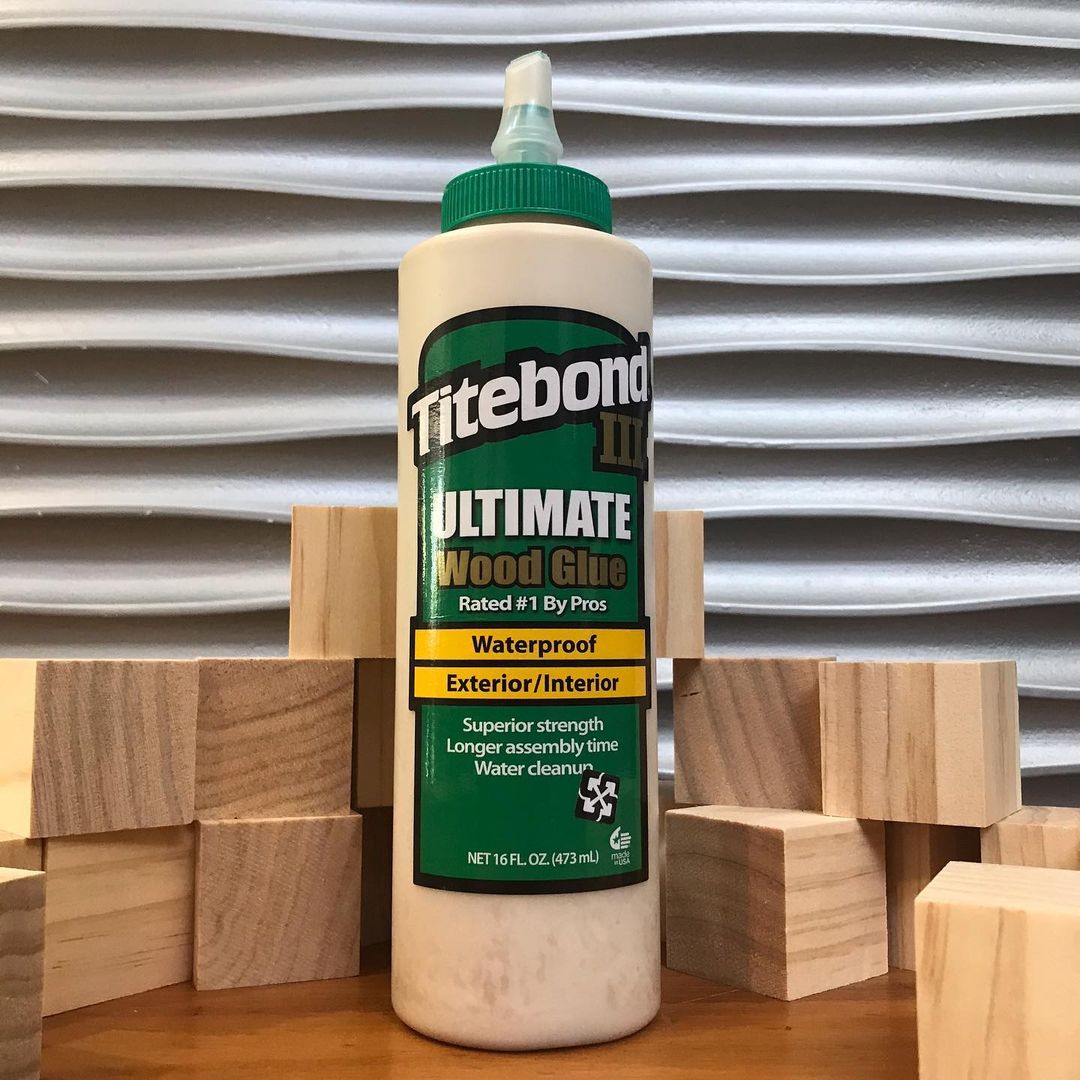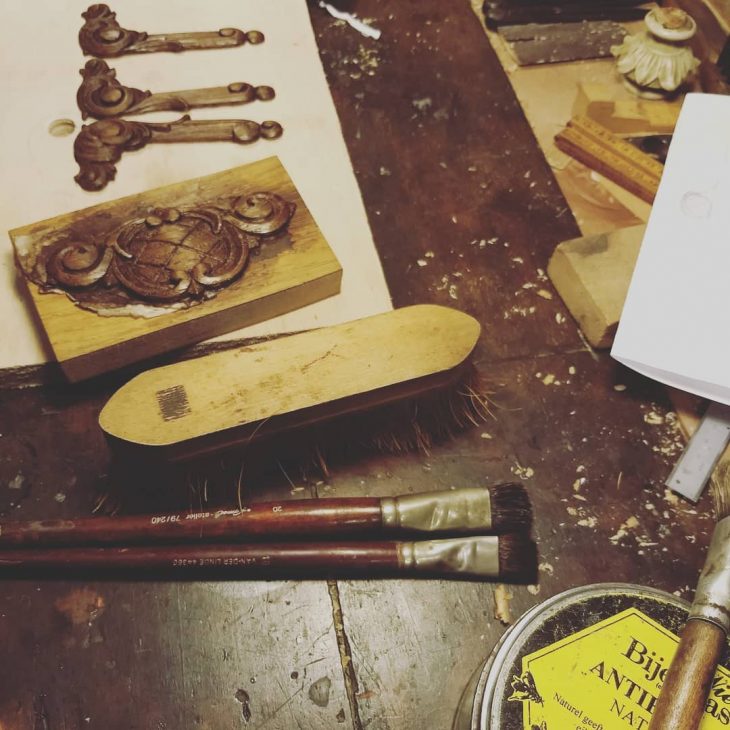Carpenter’s wood glue (yellow glue) should be all that you need and after reading this article you will not have a question how to choose glue for wood. The joint should be tightly fitted and it looks like yours are! Your working time with yellow glue is about 15 minutes. Yellow glue has a short shelf life (less than one year) so, if you aren’t working with a new bottle, you might want to get one. Do not overclamp–you can squeeze out too much of the glue and, of course, do remove the squeeze out!
Titebond II has the advantage of greater water resistance (I’m not talking the stray leak, rather dunking it in a swimming pool) and has some strength across gaps up to 1/32″ but working time is 5 minutes or less and Titebond II has the same shelf life limitations of yellow glue.
The polyurethane glues (e.g. Gorilla Glue) expand–up to 4:1 and that is a good thing on a closed joint like a dove tail, but not on an open joint like your miter joint.
– Bob Hobbs
Titebond now has a wood glue out called “extend” which takes a little longer to cure (which allows you more time for your glue-up so you don’t have to hurry to get your clamps on).
– jerry
I, too, am a convert to the foam glues, like Gorilla glue. And, try as I might, some always gets on my hands, even though I keep a large box of disposable gloves nearby. But, I would NEVER use lacquer thinner, as was recently advised, on my hands. Instead, a simple pumice stone will remove the glue in a flash, and leave your hands looking good, to boot!
– Peter Jensen
I prefer TiteBond. Why? Here’s a gauge I use, When you sand over a glue joint how quickly is the belt gummed up and can it be cleaned from the belt? Elmers is terrible. Aside from specialty glues I haven’t wondered far from Titebond. It also doesn’t seem as likely to run.
– Glen
I use regular old Elmer’s “Carpenters Yellow” glue. I normally wipe up the squeeze out prior to sanding so clog rate isn’t really an issue. Titebond II is preferred for outside applications as it’s waterproof. Elmers will come apart when exposed to water.
– MadMark
I have been using Gorilla glue for the past few months and it holds very well, spraying the surface with water truly helps. Though my only complaint is it swells and runs out of the joint for quite a while after putting it together.
– hoss
A word about Gorilla glue. If you squeeze out the air and store it upside down, it is supposed to store for up to 3 years. You can also freeze it. That’s from Gorilla Glue’s website. And yep you’d best dampen the joint cause it reacts with the moisture to set up. A friend thought his was bad cause it didn’t set up. But the wood was just to darn dry. I always dampen when I use it. I have used Elmer’s yeller glue and it seemed to give me more working time than TiteBond did. Sometimes that is a blessing for me, fumble, fumble, fumble. So that’s my story about sticky. And this will make Ya cringe, I often plane lightly to get it all flat as a fritter when it’s done. (If it’s a flat panel)
– Sonny Edmonds
I use yellow glue for most applications; white glue when I need more open time; Roo glue for Melamine and plastics; Titebond II for wet areas and Gorilla glue for outdoor use. The new Titebond trim and moulding glue works great too – no drips!
FYI: Roo glue is a very thin, milky glue that adheres to melamine, vinyl, laminate, wood etc. One side needs to be porous. We use it mainly for constructing melamine cabinetry.
– TMats
Lately I have been using Titebond “dark” glue. Why?? I have found that even when wiping after glue-up and sometimes sanding, yellow glue becomes invisible on oak until the stain is applied. At that point I have to resort to a scraper to remove it and re-stain. The dark glue shows much better to the naked eye and I have not really had any problems since making the switch.
– Mike
Go with the yellow wood glue for most projects. It is relatively water resistant when dry. Not water proof, but the wood doesn’t like water that much ether. For some projects you might even want to go with more tough stuff than the woodworkers glue. Gorilla Glue is really good for difficult applications or where you might expect weather effects, such as outdoor furniture.
– Lou
The only real difference in yellow and white glue in woodworking is the tack time. The yellow glue dries faster so projects don’t need to stay in clamps as long. Most woodworkers use white glue for projects that take longer than 10 minutes to assemble like dovetailed drawers. The slower tack time give you longer to work. If you have white glue on hands, go ahead and use it.
– Dave Lehnert
TiteBond is the real glue. It comes in dark for darker woods too. I like it better than the white stuff, as it is tackier. I use it on dovetails and had no problems. Elmer’s wood glue doesn’t even come close
– woodmannie
Polyurethane glues (Gorilla, etc.) are strongest wood glue than PVA (Polyvinyl Acetate) glues but that is not the point on these glues. Used properly the PVA glues will be stronger than the wood that it is holding. The Gorilla type glues work better in applications that might be exposed to water.
– Lou Williams
Your old standby “carpenters yellow” will form a bond stronger than the wood. Once you’re beyond the wood failure point, does it really matter how far you’re beyond it? The reasons for using alternate glues are not normally issues of strength, but of cost, application method, pot life, work time, setup time, water resistance, etc. Most any of the glues, properly applied will be stronger than the wood itself.
– MadMark
Never tried white glue for woodworking. I have used Titebond for years and always had good results and recently tried Gorilla glue. The Gorilla works good but, a word of warning, you have to watch it closely for the first 10 or 15 min. after application, it foams. I was warned about this and my first use I waited, wiped the foam and was done for the night, next day major foam runoff hard as a rock. It is also very pricey.
– Ski
Paid for a class from Marc Adams (Big wood guru). He said 98% of the stuff he makes is with white glue. He said the other glues all have their uses (he even worked with the manufacturers on some of them). But again 98% of the time he uses white glue.
– Jim Holladay




Recent Comments